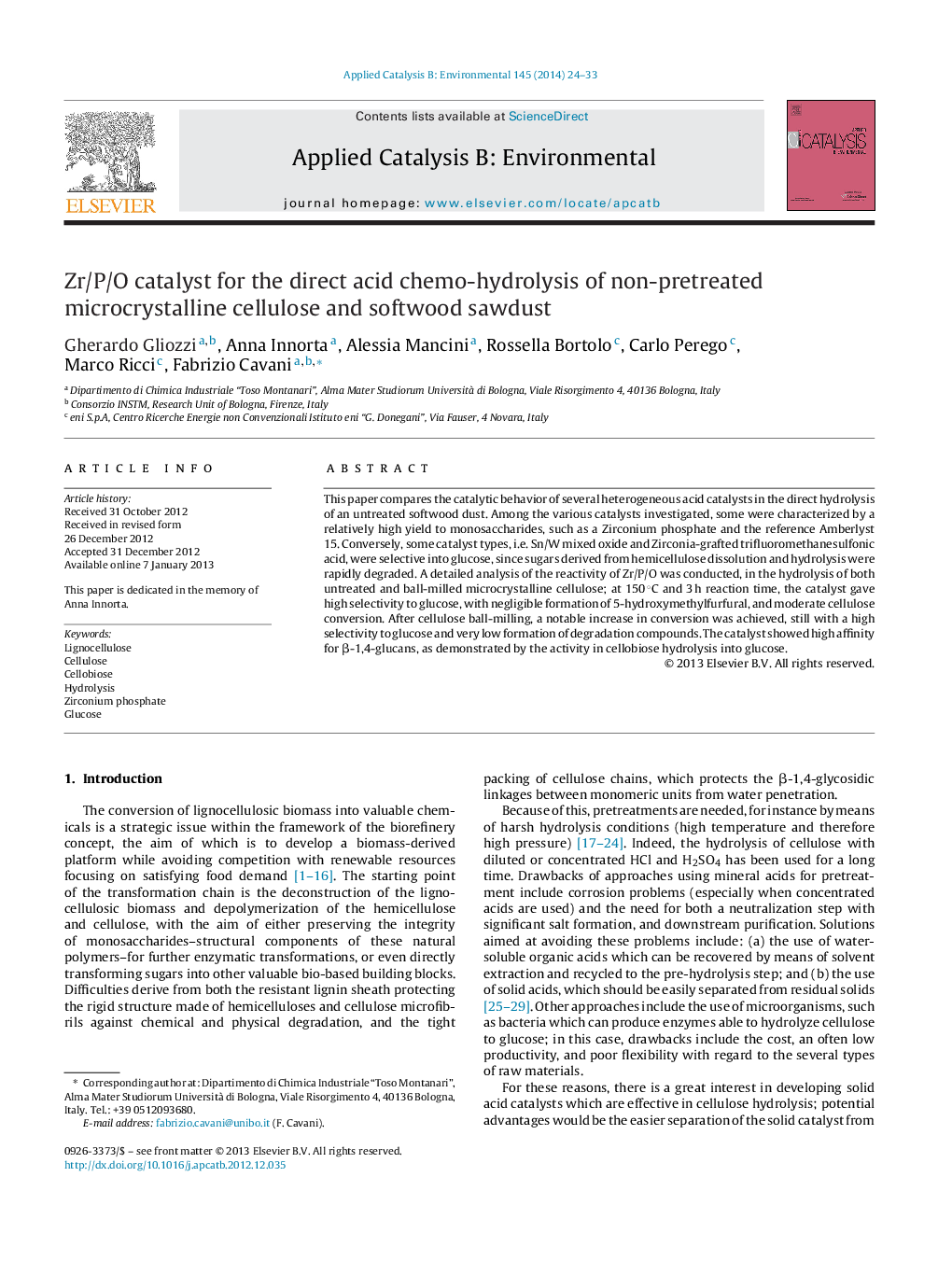| Article ID | Journal | Published Year | Pages | File Type |
|---|---|---|---|---|
| 45304 | Applied Catalysis B: Environmental | 2014 | 10 Pages |
This paper compares the catalytic behavior of several heterogeneous acid catalysts in the direct hydrolysis of an untreated softwood dust. Among the various catalysts investigated, some were characterized by a relatively high yield to monosaccharides, such as a Zirconium phosphate and the reference Amberlyst 15. Conversely, some catalyst types, i.e. Sn/W mixed oxide and Zirconia-grafted trifluoromethanesulfonic acid, were selective into glucose, since sugars derived from hemicellulose dissolution and hydrolysis were rapidly degraded. A detailed analysis of the reactivity of Zr/P/O was conducted, in the hydrolysis of both untreated and ball-milled microcrystalline cellulose; at 150 °C and 3 h reaction time, the catalyst gave high selectivity to glucose, with negligible formation of 5-hydroxymethylfurfural, and moderate cellulose conversion. After cellulose ball-milling, a notable increase in conversion was achieved, still with a high selectivity to glucose and very low formation of degradation compounds. The catalyst showed high affinity for β-1,4-glucans, as demonstrated by the activity in cellobiose hydrolysis into glucose.
Graphical abstractFigure optionsDownload full-size imageDownload as PowerPoint slideHighlights► Several solid acid catalysts were studied for softwood sawdust hydrolysis. ► Amorphous Zr phosphate turned out to be an active catalyst. ► With the Zr/P/O, 5.8% glucose yield was obtained from untreated crystalline cellulose. ► Ball-treatment of the cellulose led to a large increase of glucose yield. ► The Zr/P/O catalyst could be recovered and reused.
